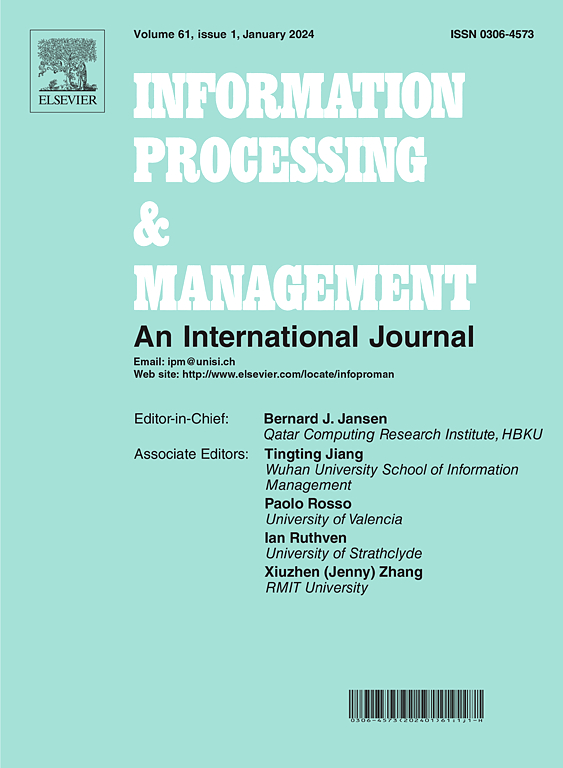A comprehensive study on fidelity metrics for XAI
IF 6.9
1区 管理学
Q1 COMPUTER SCIENCE, INFORMATION SYSTEMS
引用次数: 0
Abstract
The use of eXplainable Artificial Intelligence (XAI) systems has introduced a set of challenges that need resolution. Herein, we focus on how to correctly select an XAI method, an open questions within the field. The inherent difficulty of this task is due to the lack of a ground truth. Several authors have proposed metrics to approximate the fidelity of different XAI methods. These metrics lack verification and have concerning disagreements. In this study, we proposed a novel methodology to verify fidelity metrics, using transparent models. These models allowed us to obtain explanations with perfect fidelity. Our proposal constitutes the first objective benchmark for these metrics, facilitating a comparison of existing proposals, and surpassing existing methods. We applied our benchmark to assess the existing fidelity metrics in two different experiments, each using public datasets comprising 52,000 images. The images from these datasets had a size a 128 by 128 pixels and were synthetic data that simplified the training process. We identified that two fidelity metrics, Faithfulness Estimate and Faithfulness Correlation, obtained the expected perfect results for linear models, showing their ability to approximate fidelity for this kind of methods. However, when present with non-linear models, as the ones most used in the state-of-the-art,all metric values, indicated a lack of fidelity, with the best one showing a 30% deviation from the expected values for perfect explanation. Our experimentation led us to conclude that the current fidelity metrics are not reliable enough to be used in real scenarios. From this finding, we deemed it necessary to development new metrics, to avoid the detected problems, and we recommend the usage of our proposal as a benchmark within the scientific community to address these limitations.
关于 XAI 真实度指标的综合研究
可解释人工智能(XAI)系统的使用带来了一系列需要解决的挑战。在这里,我们重点讨论如何正确选择 XAI 方法,这是该领域的一个开放性问题。这项任务的内在困难在于缺乏基本真相。有几位作者提出了近似不同 XAI 方法保真度的指标。这些指标缺乏验证,而且存在分歧。在本研究中,我们提出了一种使用透明模型验证保真度指标的新方法。这些模型使我们能够获得完全保真的解释。我们的建议是这些指标的首个客观基准,有助于对现有建议进行比较,并超越现有方法。我们在两个不同的实验中应用了我们的基准来评估现有的保真度指标,每个实验都使用了由 52,000 张图片组成的公共数据集。这些数据集中的图像大小为 128 x 128 像素,是简化训练过程的合成数据。我们发现,忠实度估算和忠实度相关性这两个忠实度度量指标在线性模型中获得了预期的完美结果,显示出它们有能力近似这类方法的忠实度。然而,当使用非线性模型(最先进的模型)时,所有度量值都显示缺乏忠实性,最好的度量值显示与完美解释的预期值有 30% 的偏差。通过实验,我们得出结论:当前的保真度指标不够可靠,无法在实际场景中使用。根据这一结论,我们认为有必要开发新的指标,以避免发现的问题,并建议将我们的建议作为科学界的基准,以解决这些局限性。
本文章由计算机程序翻译,如有差异,请以英文原文为准。
求助全文
约1分钟内获得全文
求助全文
来源期刊

Information Processing & Management
工程技术-计算机:信息系统
CiteScore
17.00
自引率
11.60%
发文量
276
审稿时长
39 days
期刊介绍:
Information Processing and Management is dedicated to publishing cutting-edge original research at the convergence of computing and information science. Our scope encompasses theory, methods, and applications across various domains, including advertising, business, health, information science, information technology marketing, and social computing.
We aim to cater to the interests of both primary researchers and practitioners by offering an effective platform for the timely dissemination of advanced and topical issues in this interdisciplinary field. The journal places particular emphasis on original research articles, research survey articles, research method articles, and articles addressing critical applications of research. Join us in advancing knowledge and innovation at the intersection of computing and information science.
 求助内容:
求助内容: 应助结果提醒方式:
应助结果提醒方式:


